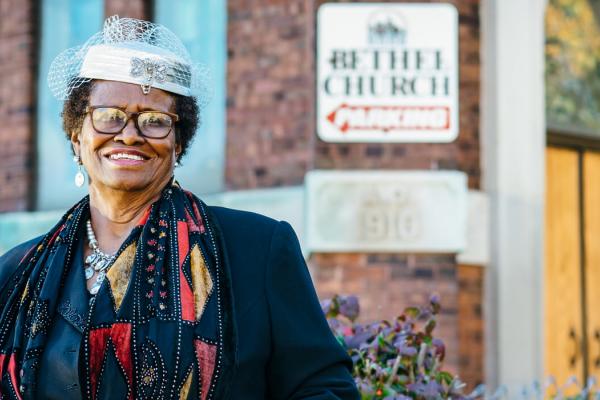PEOPLE OF COLOR in the United States are exposed to 38 percent more asthma-producing nitrogen dioxide than are white people. People of color are twice as likely as whites to live without potable water or modern sanitation.
The “big green” environmental movement often focuses on national issues and federal policy, dividing people along partisan lines of red or blue. But churches and low-income communities focus on people and their daily lived experiences. Though both are fighting for just causes, because the environment affects us all, the big greens sometimes overlook the people on the ground or do not represent them accurately.
“We have a moral and spiritual obligation to look at the impact of climate change in general and how it impacts people, including our constituents,” said Rev. Leo Woodberry, pastor of Kingdom Living Temple, an independent African-American church in Florence, S.C.
Woodberry’s church takes a robust approach to local environmental issues, including looking at climate change, air quality, and environmental justice for communities that are over-burdened and vulnerable, particularly communities of color. They also look at “environomics,” said Woodberry. “That’s where the economy and environment meet and allows corporate polluters to come into communities and dump toxins because it’s profitable for them,” he said.
Christian faith teaches that we have an obligation to care for the earth. It also teaches us to take care of one another. We have a duty to ensure clean water, clean air, and a non-toxic environment. Black and Latino churches are becoming strong voices not just for people, but for creation; for the health of bodies, families, and neighborhoods.
Exposure to nitrogen dioxide is one of the main triggers for asthma and contributes to heart disease. Researchers estimate that if nonwhites breathed the lower NO2 levels experienced by whites, 7,000 deaths from heart disease could be prevented among nonwhites each year.
Minority communities and the congregations that serve them deal with improper sanitation, which leads to health problems. “More than 1 percent of black people live in houses without potable water and modern sanitation, compared to less than 0.5 percent of whites,” according to Bryce Covert in The Nation. Water contamination has largely affected those who “live in rural areas, Indigenous communities, and migrant farmworker communities.”
In South Carolina, Woodberry links climate change to water quality. In 2015 and 2016, South Carolina had statewide flooding from unprecedented rainfall and Hurricane Matthew. In rural areas, said Woodberry, people often get their drinking water from private wells. They also often use septic tanks for waste. “When the floods come, then you have herbicides, pesticides, bacteria, and germs from the outside, and also maybe some matter that comes from the septic tanks where the waste matter is. As the water recedes, a lot of those toxins and pollutants wind up in folk’s well water,” Woodberry said.
All these are examples of why African-American and Latino churches are mobilizing on environmental issues—particularly through the People’s Climate Movement. On April 29, broad church and civil society coalitions will join for a People’s Climate March on Washington, D.C.
The Trump administration has shown that it does not plan to protect our earth. The administration is enacting policies and regulations that will further hurt vulnerable communities.
The People’s Climate Movement is addressing environmental justice, Indigenous rights, and the transition from fossil fuels and “dirty labor” to clean energy solutions and sustainable labor and wages.
The church can serve as a voice to lift up these issues, educate, and organize power for change. Sojourners, Franciscan Action Network, and Green Faith are working together to amplify the strength of the faith community through the experience of organizers such as Rev. Woodberry.
Denying the effects of climate change will not make them go away. And staying silent, hopeful, and prayerful is not enough to get policy change. We must be bold and clear: We will not stand for noxious air, polluted water, and toxic neighborhoods. We are moving from prayer to action to resistance.

Got something to say about what you're reading? We value your feedback!
